Executive Summary
Through extensive interviews across the food industry ProVeg has identified two key areas that brands and retailers need to consider when designing plant-based products.
The first is scalability. It’s possibly the most vital consideration when launching a new plant-based product. It permeates every other decision – including the ingredients you use, your production facilities, and your pricing strategy.
The second is engagement. You need to be ready to build a brand voice that creates trust and establishes a relationship with consumers. If you don’t have that expertise internally, work with an organization that can help (for instance, your favorite expert NGO ProVeg. Hey there!). Educating your consumers will be a key part of this – and it’s multifaceted. To maximize your chance of success, be prepared to communicate effectively them about taste experiences (through public-catering collaborations, for example), and health/environmental benefits (through labeling).
Here are the top 7 actions brands/private labels need to take when designing new plant-based products:
- Ingredient flexibility
- Design your product to work with a range of plant-based protein isolates.
- Increase your supply-chain resilience by partnering with local farms.
- Leverage flexible labeling where regulations allow for ‘and/or’ ingredients.
- Be clean label
- Avoid mixed-production facilities (use plant-based factories only).
- Avoid ingredients consumers are wary of (e.g. methylcellulose).
- Focus on upscaling
- Develop your upscaling plan alongside product design so that you’re ready to pitch to retailers and can always keep up with demand.
- Invest in your own production facilities and/or partner with established manufacturers.
- Price strategy
- Aim for price parity with animal-based equivalents.
- Target flexitarians to increase overall revenues.
- Texture over taste
- Focus on imitating the texture of animal-based products rather than the flavors.
- Build a brand voice and tell the product’s story
- Do your research in terms of the market and be clear about your target consumer’s needs.
- Partner with a branding agency that understands plant-based food marketing.
- Educate consumers
- Identify the key issues you want to communicate (health/sustainability etc.).
- Decide where education fits in your strategy (outreach, packaging, social media).
We spoke to a range of industry experts about what it takes to develop a winning plant-based product strategy. This is what companies such as Tesco, AB InBev, Ojah, Migros Industrie, ABP EatWell, Oumph!, Coop Netherlands, Sodexo, Heura, Upfield, and others had to say. Bon appetit.
1. Ingredient Flexibility
As an emerging sector, alternative proteins entail a degree of risk. Whereas conventional ingredient supply chains are well established, plant-proteins and fermented proteins are currently less robust. To mitigate this, you want to design a food product that can achieve a consistent texture and taste even when ingredients are substituted.
“Make sure your products work with different protein isolates. For instance, you want to be able to substitute soy for pea if the soy market crashes. Test out a multitude of proteins, don’t stick with one – it’s what we’ve done.”
Flexible ingredients can present a challenge for labeling – especially in the EU, where food labels have to be exact. In the US, however, ‘and/or’ statements are permitted. As a senior ingredient researcher at Mondelez International told us, “This creates a huge opportunity for flexibility, so long as we can guarantee the same product quality regardless of ingredients.”
Having a flexible supply chain also makes it harder to guarantee production standards. “Be careful about going organic,” warns Heather Mills. “We were organic at the start, but it leaves you vulnerable to a shortage of one niche organic ingredient. Better to be organic by design but not advertise it.”
Ingredient flexibility can also protect you against regulatory shocks and shifting public attitudes. “Soya was treated as an allergen in Scandinavia, which has created problems for us,” cautions Frank Giezen, Co-Founder of major European private-label producer Ojah. They’re working to retroactively diversify their ingredient range, but it’s not straightforward. “If we try to work on a pea protein, for instance, availability is low, price is volatile, and long-term contracts have already been established by our rivals like Beyond Burgers, so supply is hard to guarantee.” In other words, ingredient flexibility works best when it’s designed-in from the start.
Case Study: VBites & Domino’s Pizza
VBites produces vegan cheese for Domino’s Pizza in a number of countries. The founder knew that a robust supply chain was essential to meet high demand consistently. Many vegan cheeses rely on coconut oil, making them vulnerable to global supply shortages and price fluctuations. VBites offset this risk by designing their cheese to perform just as well using flaxseed and other oils.
They further protected their supply chain by developing close partnerships with farms in the countries where their products are manufactured. For instance, VBites guaranteed sales to flaxseed farmers in the UK for a number of years to help them increase their production of this crop with confidence.
For expert advice in ingredient functionality and mitigating supply chain risk, ProVeg is always ready to help.
Actions:
- Design your product to work with a range of plant-based protein isolates
- Increase supply chain resilience by partnering with local farms
- Leverage flexible labeling where regulations allow “and/or” ingredients
2. Be clean label
“Keeping ingredient lists clean and recognizable will further elevate the overall health perceptions of plant-based products with consumers.”
Health is consistently one of the top driving factors behind consumer food choice. 34% of European consumers think that health is the most important factor when choosing a food product.3 This is driving demand for ‘clean label’ products that are free from artificial additives or preservatives. “We’ve done market research – AB testing on labels,” says Cedric Verstraeten, Global Director of Value Creation at AB InBev. “It clearly shows that people prefer labels that say ‘yeast protein’ versus ‘methyl cellulose’.”
But producing clean label products comes at a risk. “Cross-contamination can destroy your brand”, warns VBites founder Heather Mills. She knows this first-hand, as traces of dairy were found in her friend’s plant-based products. The cause was contamination from the previous animal-based product that had been made in the same machine. The damage to the brand was irreversible, and forced the business to close.4
The best solution? A dedicated facility for clean-label vegan products. The downside: substantial capital expenditure is needed. As a consequence, many manufacturers use a single factory for both types of product, which brings a different kind of cost.
For instance, a major Swiss retailer told us about their private label meat-free sausage production. To avoid high capital expenditure on an emerging range, they’re using their existing factories – which predominantly handle animal-based products. This means the equipment needs to be deep-cleaned in-between products in order to prevent contamination. As a result, the entire week’s meat-free sausage production has to be crammed into Saturdays.
This system puts a ceiling on the output capacity of plant-based products, and the double-cleaning significantly increases operational costs. This forces consumer prices up, which in turn suppresses demand – perpetuating the low-production, high-overhead model.
The alternative is to invest upfront in properly customized plant-based manufacturing facilities. Two of Europe’s biggest animal-meat producers – ABP and Ponnath – recently did just that. “They transformed the factory to being fully vegan, knowing it would improve economies of scale,” explained Miguel Serrano, Head of Alternative Proteins at Ponnath.
But ‘vegan’ doesn’t automatically mean ‘clean label’, as our next case study shows.
Case Study: Fermented Proteins
Drinks manufacturer AB InBev are leveraging their fermentation expertise and investing heavily in alternative proteins. Their aim is to help existing plant-based products achieve clean label status, and improve taste and texture along the way.
“We’re trying to sell a clean-label texturiser which uses microorganisms [yeast]. It’s a fully circular alternative to methyl cellulose which is a key ingredient the industry is trying to replace as demand for clean label products increases.” – Cedric Verstraeten, AB InBev.
ProVeg’s Incubator supports cutting-edge food technologists in developing the next generation of fermentation-based proteins. We helped Better Nature to develop their fermentation-based tempeh to produce “protein without compromise”. Check out the full list of ProVeg Incubator alumni and see how we can connect you with whatever expertise you need.
Actions:
- Avoid mixed-production facilities (use plant-based factories only)
- Avoid ingredients consumers are wary of (e.g. methylcellulose)
3. Focus on Upscaling
“When we start something, we know we need to upscale from the outset – so we build it into our plan,” said Frank Giezen, Co-Founder of Ojah, in an interview with ProVeg. “Brands should invest more money on upscaling rather than branding.”
If you don’t have the capital to invest in your own production facilities, partner with a behind-the-scenes manufacturer who can produce your recipe to high standards at scale. Build these relationships at the same time as developing your product – they need to be at a mature stage by the time you’re ready to launch. “If you [as a food producer] want to approach retailers, your readiness to scale will be a key concern,” says organic food-supply-chain expert Ele Gower.
Case Study: Scaling an ingredient with AB InBev
Low production volume is a painful obstacle to overcome. “If you make an extruded product (e.g. a plant-based burger), you’ll find a kitchen to scale it for you, but if you work on the ingredient side, it’s very hard to scale up and very capital-expenditure intensive,” explains Cedric Verstraeten, Global Director of Value Creation at AB InBev.
If you’re an ingredient business, don’t lose heart. ProVeg International can connect you with scalable manufacturers across the world. In fact, we helped AB InBev overcome this difficulty by personally introducing them to the CEO of one of Europe’s biggest fermentation plants. We’re always here to help – just drop us a line: [email protected].
Actions:
- Develop your upscaling plan alongside product design
- Invest in your own production facilities and/or partner with established manufacturers
4. Have a price-parity strategy
If there’s one thing consumers agree on, it’s that plant-based products are still too expensive. About 50% of consumers cite over-pricing as a top reason to avoid such alternatives.5 And they’re not alone – many of the manufacturers, retailers, and brands we’ve spoken to agree.
Part of this is due to legacy scaling issues, which new entrants can hopefully now side-step. But the other part is down to attitude.
“Plant-based is cheap. If you’re on a tight budget and can no longer afford the cheap [animal] meats you used to buy, you can easily buy plant-based alternatives for around £1.50/€2… You can feed a family for a relatively small amount” says one plant-based food expert at ABP Eat Well. So why isn’t this being talked about? “Retailers don’t want to portray [plant-based] as cheap… they don’t want to reduce their margins.”
How high are these margins? Typically 40%-50% for plant-based products, which is significantly higher than the 7%-8% retailers get on animal-based product equivalents. Fortunately, some retailers are taking steps to rectify this (see our case studies below) – and unlock the flexitarian mass market in the process.
But what can brands do? A key question to ask yourself is ‘who is my product for?’. “Are you creating a premium product? Or do you want to feed the world?” asks Heather Mills. “You could make a premium burger, but there’s no way a family of six could afford it.”6
Frank Giezen, Co-Founder of Ojah, echoes her sentiments. “The pricing for meat alternatives is too high. If you want to support a transition of 30% of all consumers within 10-15 years, the pricing needs to be right.”
Fortunately, brands and retailers stand to benefit from reaching mainstream consumers – even if they have to lower margins to increase stock turnover and overall revenue. (Check out our whitepaper ‘3 ways to achieve price parity and drive sales’ for more pricing examples and strategies. Spoiler: you can double your overall revenue with this strategy.)
Case Study: Tesco & Co-Op UK
In May 2021, Co-op UK became the first major retailer to introduce price parity with animal products for their entire private-label “Gro” range of plant-based products. They cut the prices on some products – like vegan sausages and burgers – by 50%.
“This move is a step in the right direction and we encourage other retailers and brands to consider making the change too,” said Co-op Food CEO Jo Whitfield.7
“We’re delighted to see retailers embracing price parity for their plant-based product ranges. By making products affordable for mainstream consumers, retailers can help generate economies of scale that benefit everyone, and deliver huge sustainability benefits.”
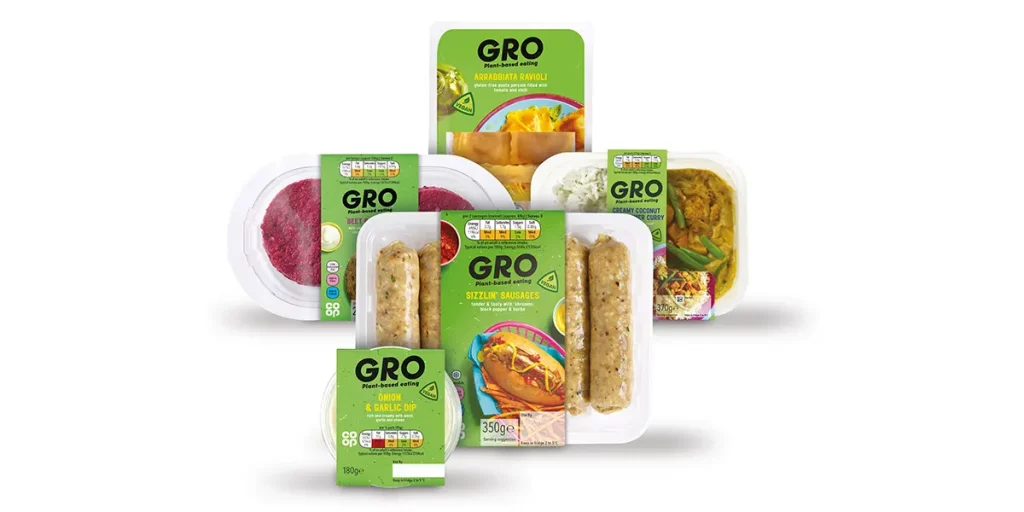
Tesco, the UK’s biggest retailer, followed shortly after, expanding their plant-based range and slashing prices across their budget ‘Plant Chef’ range.
“We match prices to the equivalent product to make it easy for people to make the switch”, said Derek Sarno, co-founder of Tesco’s premium vegan range Wicked Kitchen.8
One of Tesco’s biggest meat suppliers, Samworth Butchers, have now opened a dedicated plant-based production facility to meet the rising demand from Tesco’s consumers.9
Brands and retailers can stay competitive by ensuring they have a scalable, cost-efficient operating model, and pass on those savings to customers. ProVeg can help you achieve this – check out the next case study to see how we helped Lidl, the European retail giant.
Case Study: ProVeg & Lidl
European discount retailer Lidl wanted to expand their vegan range – and, like any good Ghostbuster, they knew who to call. ProVeg supported Lidl with the creation of an online product-configuration tool. We then activated our testing community to submit ideas for new plant-based products.
70,000 people participated in the online questionnaire. This allowed ProVeg and Lidl to identify the best ideas for plant-based food products, and configure them to meet consumer preferences.
ProVeg further supported Lidl in planning and implementing a co-branded three-day co-creation workshop with Lidl’s employees and customers. We organized tasting sessions and held two keynote talks.
As a direct outcome of the workshop, Lidl launched two new plant-based products under the “Next Level” brand in 2019, and three more in January 2020. ProVeg supported Lidl in launching these new products through a co-branded social media-campaign, sharing recipes and ideas, and generating thousands of engagements.
In 2021, Lidl went further still. In partnership with ProVeg Germany, they launched 44 new plant-based products across 3,200 stores nationwide. They’re now also rolling them out to other countries across Europe. Thanks to its partnership with ProVeg, Lidl has developed a strong plant-based image, and is on its way to becoming a one-stop shop for plant-based purchases.
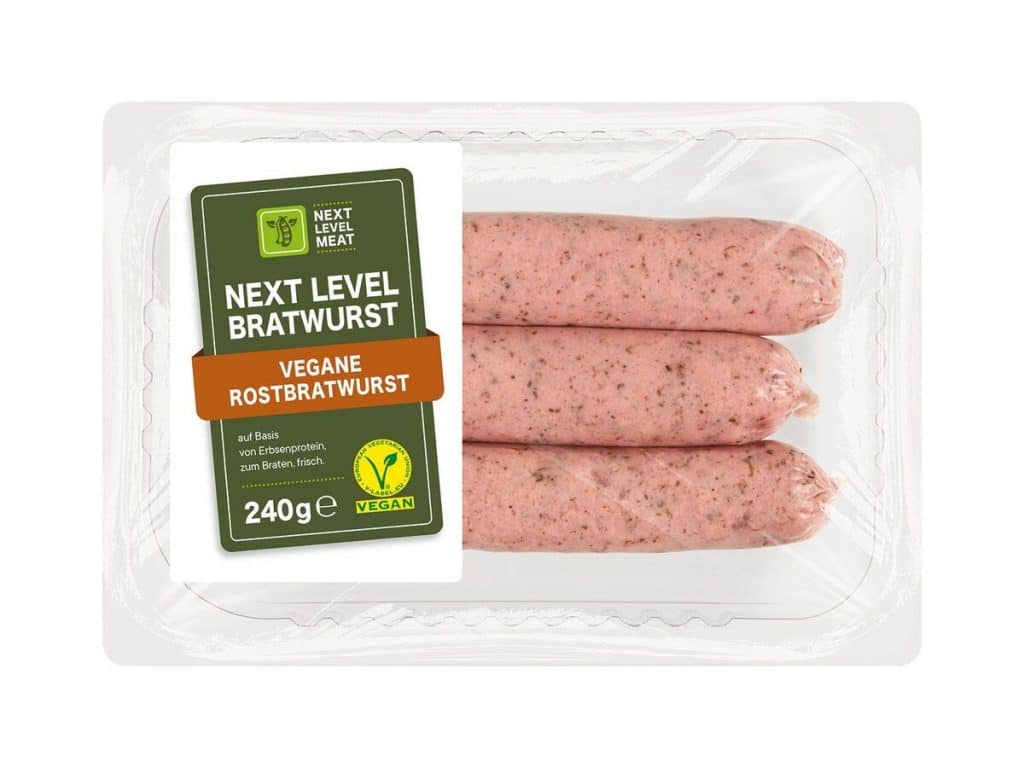
ProVeg is ready to help your organization smash its plant-based goals. Firstly, we’ll work with you to define your key questions and determine which regional markets, product categories, and consumer segments you should be targeting. Then we’ll conduct primary and secondary research to comprehensively address these questions. Finally, we’ll present our key findings, with customized recommendations on the next steps needed to optimize your business. Our method worked wonders for Lidl, and we’d love to bring that same level of success to you. You can reach out to us at [email protected].
Actions:
- Aim for price parity with animal meat equivalents.
- Target flexitarians in order to increase overall revenues.
- Partner with an industry expert to ensure that you’re designing the right products.
5. Texture over taste
When designing your product, imitating conventional meat textures should be your number-one goal. As Oumph! founder Ankan Linden puts it, “People don’t like meat for the taste – we add things to give it taste. People like meat for the texture.”
Yet texture is currently a key area of disappointment for plant-based consumers. 28% of regular plant-based shoppers are actively looking for alternatives with better texture.10 Those preferences are seen in mainstream consumer behaviors – where 88% prefer textures that are familiar and trusted. Only 7% want to experiment with new and unusual textures – meaning that familiarity of texture is central to your product’s potential appeal.11
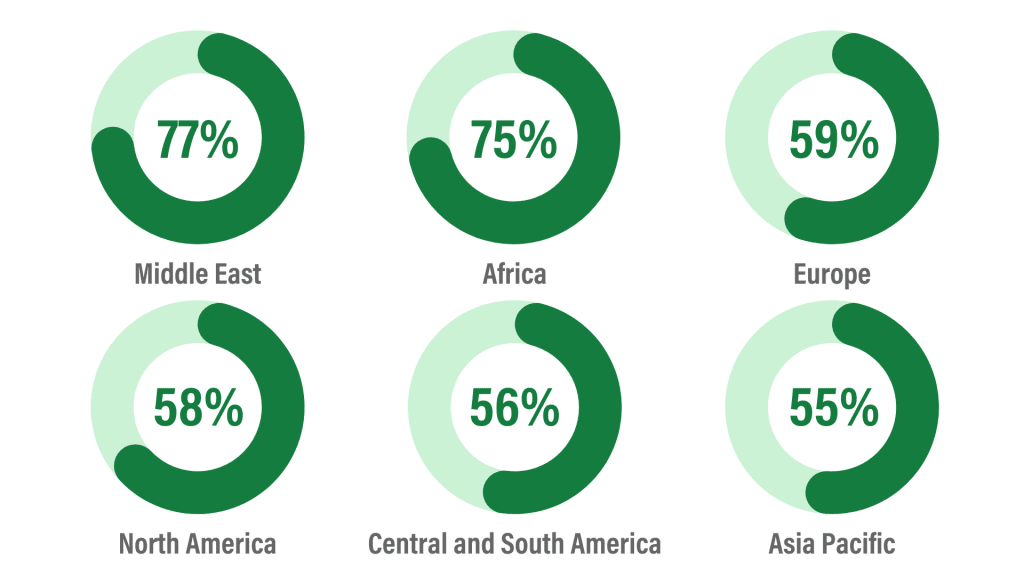
“There’s still a lot of resistance around taste and texture”, says one commercial manager at ABP EatWell. But that should be seen as an opportunity for new products entering the space. “Improving textures and nutrition from new food technologies like fermentation will make a big difference to taste-seeking consumers,” agreed a product manager at Doehler.
Consumers can always add sauces and spices to enhance the flavor of their chosen protein, but the underlying texture is essentially fixed. Plant analogs need to get this right if they’re going to win over the flexitarian masses.
ProVeg regularly supports manufacturers with taste tests, with the help of our testing community of over 20,000 engaged consumers and more than a dozen in-house experts. We recently supported a brand with taste testing for their new B2B bakery product, a premix that bakeries can use to replace the breading in items like breaded chicken nuggets and schnitzels. We lit the Bat-Signal and 19 of ProVeg’s finest taste-testing staff assembled at our Berlin headquarters. Our chef prepared the product in three different ways, providing a range of taste and textural experiences for our experts to analyze. We identified which sensory properties of the product were performing well and which still required improvement. We were also able to test and demonstrate that the product was a viable concept, while adding further value through tips on improvements for the B2B preparation instructions and marketing.
We’re speedy, by the way! We turned this around within a week of receiving the sample products. The brand was delighted with ProVeg’s insights, and we’re continuing to support them with new product development.
We offer expert tastings and, in-home test panels with your target group, as well as surveys. This is a great chance to optimize your product ahead of launch. Contact us for more information: [email protected].
Case Study: Oumph!
Oumph! Have won multiple taste awards, and are continually expanding their range of meat alternatives. They first launched their plant-based pulled pork product in Sweden, and have since developed mince, kebab stips, ribs, burgers, and spicy pulled pieces. Their products are sold in a dozen countries (and rising), and they all succeed using the same core principle: texture comes first.
“We’re delighted to see retailers embracing price parity for their plant-based product ranges. By making products affordable for mainstream consumers, retailers can help generate economies of scale that benefit everyone, and deliver huge sustainability benefits.”
Oumph! has a clear growth strategy too, which centers around getting their product into contexts where consumers can try it. They’re available internationally in restaurants and hotels, and public-catering settings like university canteens. ProVeg can help you optimize your texture, get early-stage consumer feedback, and plan for success. Drop us a line at [email protected].
Action:
- Focus on imitating animal meat textures, not flavors.
- Use food technology such as fermentation to improve the texture of your products.
6. Build a brand voice
Even private-label products need a brand voice, or ‘story’, to engage consumers. Competing on price alone isn’t enough. While consumers are predominantly motivated by price and taste, we ultimately make decisions based on emotions.29 Thus, creating a product narrative that resonates with your target audience is vital.
Consider the power of branding for a moment. When you think of oat milk, which brand comes to mind? How about plant-based burgers? The dominant brands have invested significant time in understanding three key issues:
- Who is our target consumer?
- What problem are we solving for them?
- How can we best communicate our solution?
“It’s vital that the branding signals that ‘this is as good as the [animal-meat] equivalent’ in terms of taste and texture,” said a manager at ABP regarding the success of their new plant-based ‘Dopsu’ brand.
A clear brand story is also important for winning over the retail staff who will be selling these new plant-based products. “We can replace [animal-based] products with better taste, lower prices, and the same appearance… But the emotion with store management is high – we need to give them time to get used to it,” said Wim van den Burg, Category Manager Team Lead at Coop NL.
Case Study: a private-label flop
A European retailer commissioned Ojah to manufacture a private-label vegan product for them. The end product was, by design, indistinguishable in taste and quality from a leading brand (also manufactured by Ojah).
The retailer launched their new private label version straight into their frozen sections. Consumers could now get the same delicious product for half the price – but they ignored it. Why?
“We always tell retailers you can’t start a private-label strategy out of the blue – you need to build the story first. This is from experience… [we produced the] same product, half the price, yet it didn’t sell – so you really need someone to tell the story,” explains Ojah founder Frank Giezen.
Tesco, the UK’s biggest retailer, followed shortly after, expanding their plant-based range and slashing prices across their budget ‘Plant Chef’ range.
For best-practice case studies on branding, read How to work with influencers to reach key consumers.
If you’re looking to refine your products’ positioning, branding, and communications in order to meet the specific needs of your consumer segment, ProVeg has you covered. We have extensive knowledge of flexitarian consumers in Europe, from general preferences to specific consumer sentiments regarding particular product categories. Depending on your needs and interests, ProVeg conducts tailored quantitative and qualitative analysis in order to generate key insights and provide customized recommendations for your business. Download our recent survey ‘What consumers want: A European survey on consumer attitudes towards plant-based foods, with a focus on flexitarians.’
Actions:
- Research the market, and be clear on your target consumer’s needs. For instance, Lidl did this successfully in the earlier case study when they partnered with ProVeg to crowdsource the views of 70,000 consumers as to what plant-based products they should develop next.
- Partner with a branding agency that understands plant-based food marketing.
7. Educate consumers
Why are so many consumers worried about plant-based foods being ‘ultra-processed’? Methylcellulose is an ingredient added to many meat analogs, for instance, and it sounds pretty evil… yet it’s made from plants? “There’s education we need to do as consumers to understand [plant-based products] better,” explains Derek Sarno of Wicked Kitchen, responding to that exact question.12
Brands such as Quorn and food-service giant Sodexo echo these sentiments. Quorn is working with school caterers to ensure that young people enter the market with an accurate understanding and positive experience of plant-based foods. Similarly, Sodexo has expanded its school teaching resources to include resources on food production and sustainability. “Teachers can work through these with pupils, ahead of their visits to plant-based factories, so that there’s a connection in the pupil’s mind,” explains David Mulcahy, Food Innovation & Sustainability Director at Sodexo UK & Ireland.13
Case Study: ProVeg School Plates
ProVeg’s School Plates campaign aims to make it easy for school caterers to transition to plant-rich meals. In September 2021, we published 35 free healthy and delicious plant-based recipes designed for schools, alongside our free guidelines.
ProVeg UK has now built partnerships with over one in 10 local authorities in England, expanding our reach to daily meals for over 600,000 pupils. We’re on track to support every authority with introducing at least one meat-free day per week – which will avoid the consumptioon of over 10 million animal-meat meals per year, and promote sustainable healthy meals to children across the country.
We recently provided training to the heads of catering for Salford City Council, which produces 11,000 school meals per day. Our cascade training model equips head chefs with the skills, resources, and confidence to train their cooking teams. Thanks to ProVeg’s support, schools across Salford will now be introducing new menus which include several plant-based dishes each week.
Following great feedback from our UK school partners, we’re rolling out the program internationally. If your brand or label wants to play a part in increasing school pupils’ access to plant-based meals, get in touch at [email protected].
How and what you chose to educate consumers about should be unique to your brand’s mission and your product’s target audience. When choosing food products, European consumers rate taste (83%) and freshness (80%) as the most important factors.35 Other consumer motivations – such as health, sustainability, and animal welfare – often require education.
For instance, as part of Heura foods’ ‘good rebels’ brand, their social-media strategy aims to educate consumers. They have ‘Good news Fridays’ to inform and educate people about the latest developments in plant-based foods and sustainability, while Wednesdays are dedicated to debunking myths (e.g. vegans are protein deficient), sharing rigorous sustainability data, and highlighting animal-rights issues.
“We make content that’s ready to be shared by influencers and the community. People don’t want to share something that’s ego-centric to a brand, it should talk about the shared value and message – put the logo on the post, that’s enough. The rest should be about the mission values.”
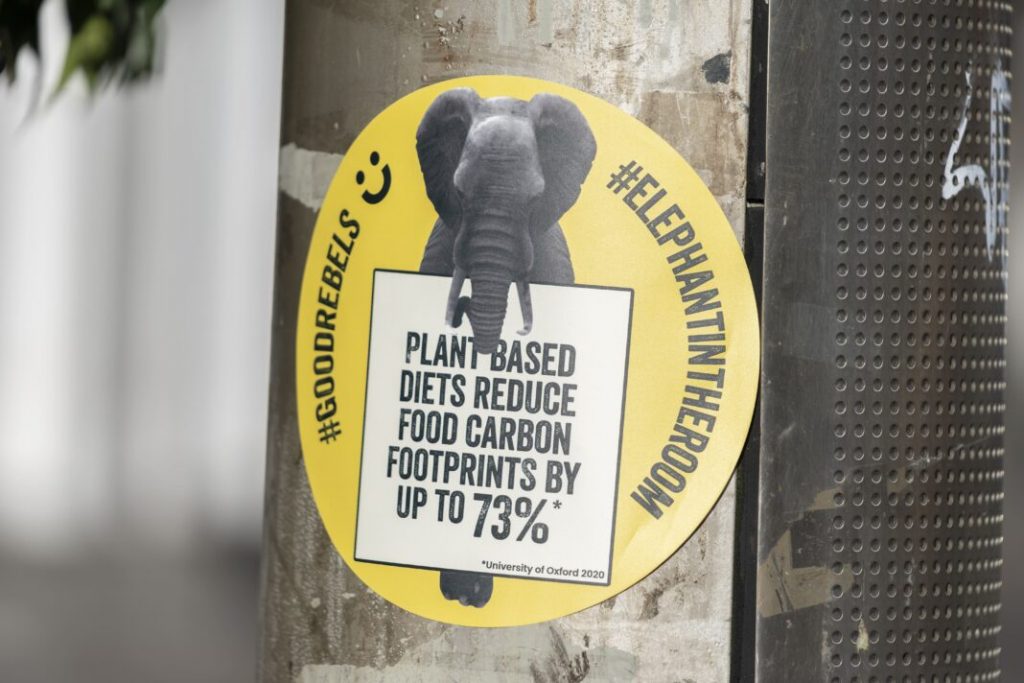
Upfield is taking a different approach. The world’s largest manufacturer of vegan spreads is choosing to raise the profile of food sustainability through their packaging. “We want to give customers the opportunity to make informed choices. There’s a lot of research that shows once you give consumers information about sustainability, they’ll make a choice based on it,” said a senior team membe Upfield equips its brands with clear emissions figures and transparent calculation methodologies, then gives them the freedom to communicate that information in their unique brand voices.
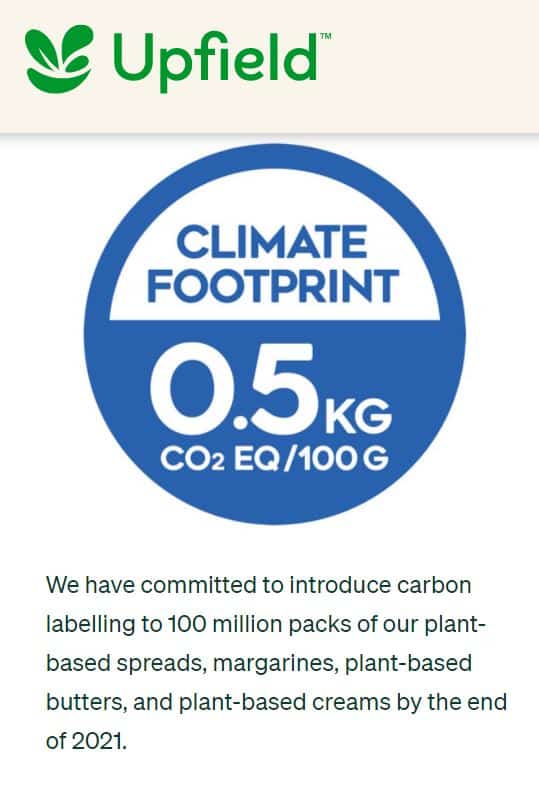
Are you looking to create a brand voice that will resonate with consumers? ProVeg has you covered. We’ll work closely with you to create and analyze customized questionnaires, and provide tailored consumer feedback on products, branding, pricing strategies, whitespaces, and other pressing questions you may have. Get in touch at [email protected].
Actions:
- Identify the key issues you want to communicate (health/sustainability, etc.).
- Decide where education fits into your strategy (outreach, packaging, social media, etc.).
Conclusion
When you’re developing a plant-based product it’s important to plan for scalability and brand engagement from the outset. Aim for flexible ingredients and a clean label, as well as a pricing strategy that will be competitive against animal-based products. Planning to upscale will help you reduce production costs and pass on savings to consumers, which is vital for appealing to mainstream flexitarian consumers. Brands should also expect to educate consumers as to the benefits of new plant-based products – through content marketing and on-pack messaging.
ProVeg International works with companies along the entire value chain, giving us a unique insight into the key challenges, obstacles, and opportunities at every stage of the journey as you take your product to market.
As a leading NGO in the alternative-protein space, we have no commercial agenda. This allows us to provide objective expert advice and help support you successfully and effectively by harnessing the power and profitability of the shift to plant-based eating – in the most effective way for your business.
Whether you’re looking to gain a deep understanding of the market or want to identify whitespaces for your next product launch, ProVeg has you covered. Let’s talk – you can reach out to us at [email protected].
References
- Speaking in her keynote talk at Plant Based Work Expo, London, 2021.
- Kerry (2019): Winning with plant-based. Unlocking the keys to success for a growing market Available at https://www.kerry.com/na-en/explore/winning-with-plant-based-report (last accessed 26.11.2021).
- Smart Protein (2021): What consumers want: A survey on European consumer attitudes towards plant-based foods. Country specific insights. European Union’s Horizon 2020 research and innovation program (No 862957). Available at https://proveg.com/what-we-do/corporate-engagement/consumer-attitudes-plant-based-food-report/ (last accessed 26.11.2021).
- Speaking in her keynote talk at Plant Based Work Expo, London, 2021.
- Mattson (2020), cited from Watson, E (2020): SHIFT2020: How are consumers thinking about plant-based eating? Mattson unveils new survey data. Food Navigator. Available at https://www.foodnavigator-usa.com/Article/2020/07/14/SHIFT20-How-are-consumers-thinking-about-plant-based-eating-Mattson-unveils-new-survey-data (24.01.2022).
- Speaking in her keynote talk at Plant Based Work Expo, London, 2021
- Whitfiels, J (2021): We’ve cut the price of our plant-based Co-op GRO range to make it more affordable for everyone! Co-op. Available at https://www.coop.co.uk/blog/weve-cut-the-price-of-our-plant-based-co-op-gro-range-to-make-it-more-affordable-for-everyone (last accessed 24.01.2022).
- Speaking at Plant-based World Conference & Expo in London, October 2021.
- Vegconomist (2021): Meat product manufacturer opens dedicated plant-based facility to supply Tesco with vegan products. Available at https://vegconomist.com/companies-and-portraits/meat-products-manufacturer-opens-dedicated-plant-based-facility-to-supply-tesco-with-vegan-products/ (last accessed 24.01.2022).
- Kerry (2020): Creating plant-based products for choosy flexitarians. Available at https://www.kerry.com/insights/kerrydigest/2020/plant-based-products-flexitarians (last accessed 02.11.2021).
- FoodMarketingTechnology (2021): Flavor, color, & texture. Trends in 2021. Available at https://fmtmagazine.in/flavor-color-texture-trends-in-2021/ (last accessed 29.11.2021).
- Speaking at a panel talk moderated by ProVeg International at the Plant Based World Expo, London, October 2021.
- Speaking at Plant-Based World Conference & Expo, London, October 2021.



